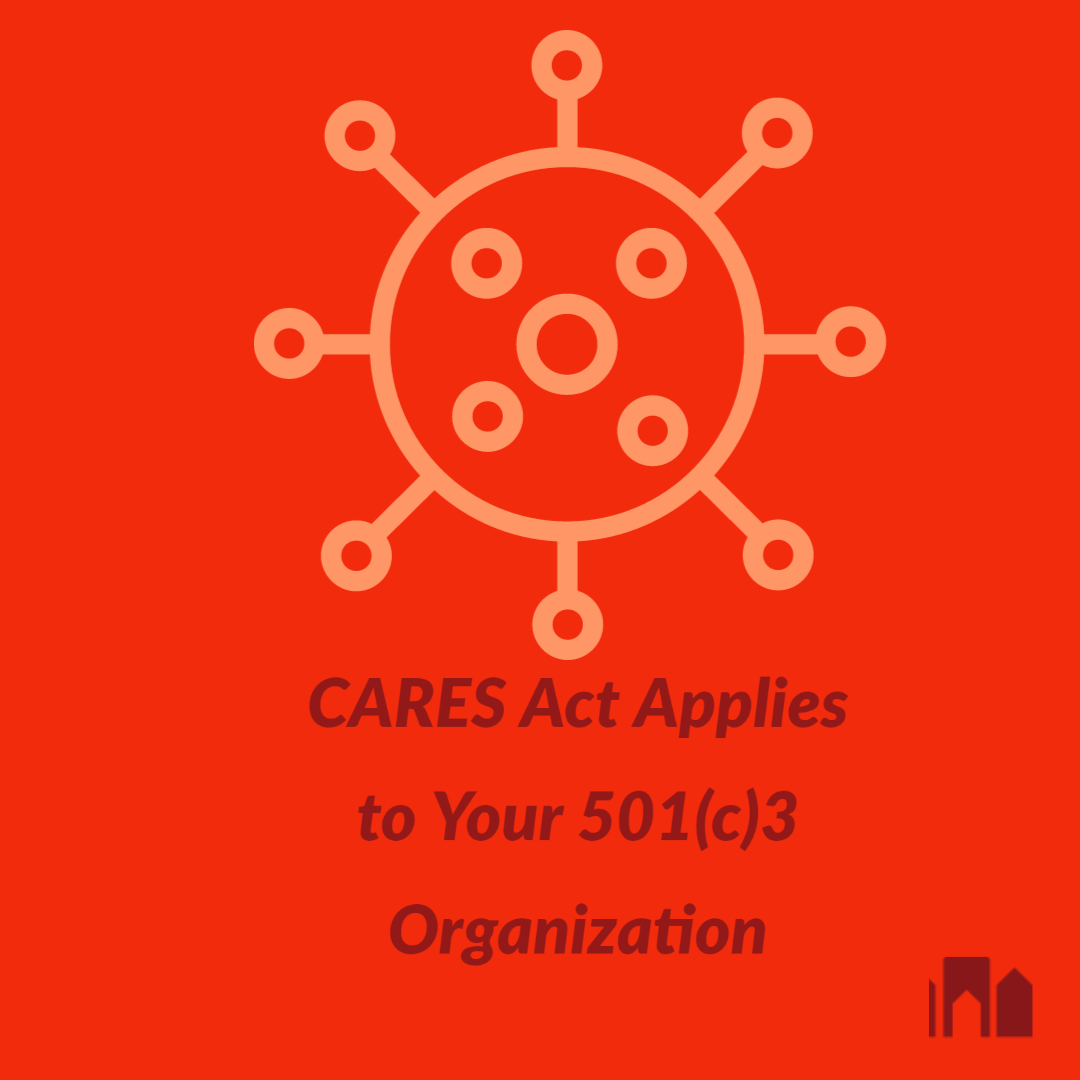
Last Friday, March 27, 2020, Congress passed the Coronavirus Aid, Relief, and Economic Security (CARES) Act with the purpose of providing “emergency assistance and health care response for individuals, families, and businesses affected by the 2020 coronavirus pandemic.”
The provisions of this bill apply to your church, synagogue, mosque, or other religious organization if you are also a small business. There are two provisions that apply to help you during this time of crisis.
Disclaimer
Before I get into anything else, let me advise you that you should check with your denominational authority, accountant, or attorney before taking any action. They are familiar with your specific circumstances where I am talking in very broad generalities for a broad audience. The text of the CARES Act is provided at the link below.
Non-Profits Are Covered
The basic period of coverage of the CARES Act is from March 1, 2020 to December 31, 2020, so this year only.
Section 1102.7(a) states that the Small Business Paycheck Protection Loans apply to “any business concern, private nonprofit organization, or public nonprofit organization which employs not more than 500 employees shall be eligible to receive a loan”.
Since most of the religious organizations I’m familiar with employee many fewer than that, you should be covered.
These funds are to help you and other small businesses survive in a time of great uncertainty and fear by helping you cover basic expenses. Most importantly, these funds help you maintain your staff salaries for two months while you may be experiencing a decrease in income from your usual sources.
Churches, synagogues, mosques, and other religious organizations provide necessary services such as soup kitchens, schools, health care, and support for our communities. I haven’t encountered any religious organization that wasn’t operating on the thinnest of financial edges. The CARES Act will help you to continue during the worst of the pandemic that’s upon us.
How Much Do We Get?
The loan is for expenses related to business interruption. The load is based on the average monthly payments of
- Payroll
- Mortgage Payments
- Rent Payments
- Payments on any other Debt Obligations
incurred during the one (1) year period before the date on which the loan is made. So you take your monthly payments for these items for the previous 12 months, add them up, and divide by 12 to get your average monthly payments. This amount is then multiplied by 2.5 to come up with your loan amount. The maximum amount of the loan cannot exceed $10,000.
What is the Loan For?
There are restrictions on what you can use these funds for? These are:
- Payroll Support, including paid sick, medical or family leave, and continuation of group health benefits,
- Salaries,
- Mortgage Payments,
- Rent,
- Utilities, and
- Any other debt obligations that were incurred before the covered period.
This loan enables you to continue to employ your staff and keep your services going. This has the added benefit of keeping your employees from applying for unemployment benefits like 3 million Americans already have.
Loan Forgiveness
This loan can also be forgiven! The loan can be forgiven if the funds are used for 8 weeks to pay for payroll expenses, mortgage and rent payments, and utilities. Additionally, employee salaries must be maintained. The expectation is that no more than 25% of the funds go to non-payroll costs. Payroll costs of annualized employee salaries are capped at $100,000.
If you are not eligible for loan forgiveness, there is no interest due for the first six months of the loan.
More information is available from the US Department of the Treasury at the link below.
Small Business Administration (SBA) Economic Injury Disaster Loan
In addition to the Payroll Protection Loan, the CARES Act makes a provision for a $10,000 grant under the SBA Economic Injury Disaster Loan. This grant does not have to be paid back, but it will reduce the amount of loan forgiveness you are eligible for under the Payroll Protection Loan program.
Action Steps
You apply for the Payroll Protection Loan through your local lender, that is, your bank. You apply for the Economic Injury Disaster Loan through the SBA site. Both require you to provide specific documentation.
Your action steps are:
- Call your denominational authority if you need their permission to apply for a loan.
- Call your attorney or accountant to let them know.
- Get your documentation in order for the applications.
- Apply for both loans.
- Get your documentation together to request forgiveness of the loans.
- Continue to do God’s work in your communities knowing that you don’t have to let staff go.
I am hoping that you have already heard about these small business loans from other sources. The time is limited to request these loans, and there is a maximum amount of funds that can be loaned so you don’t want to wait and miss out. Please take care of your organization during this time so that it can continue to take care of your community.





